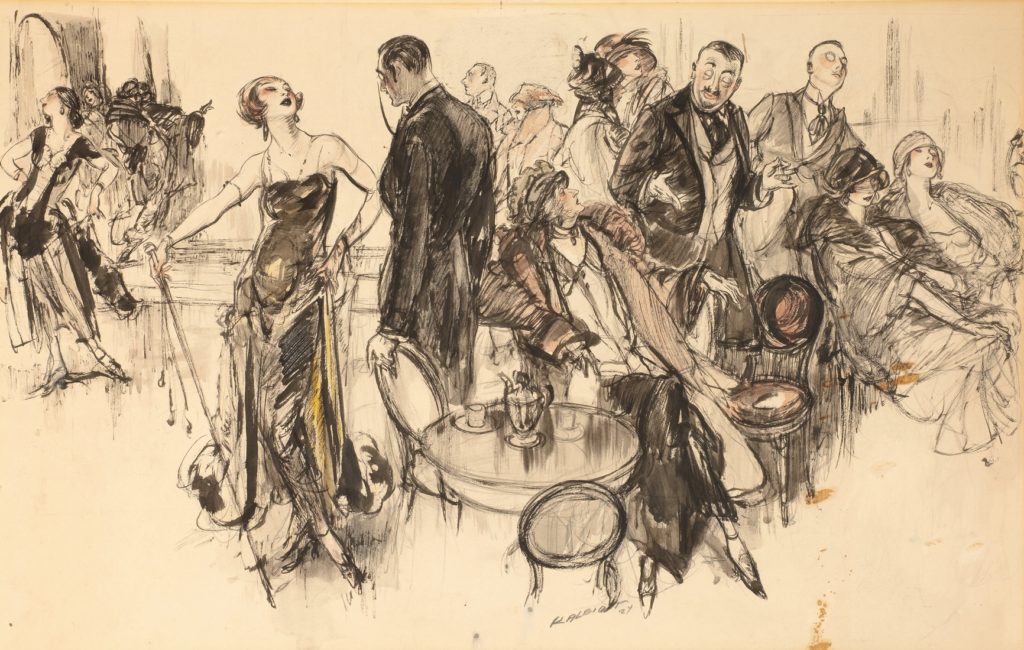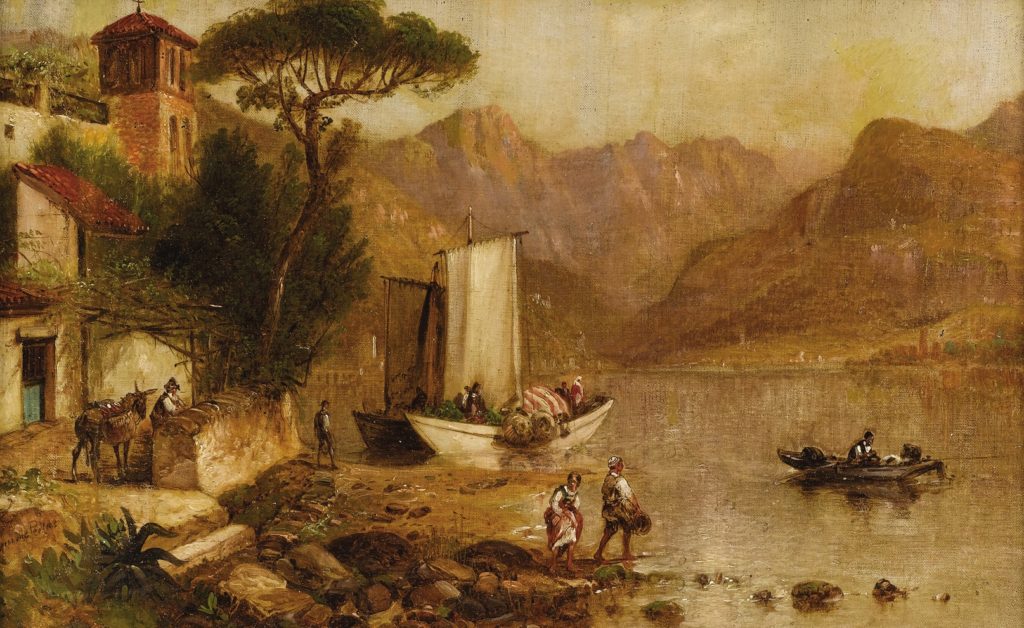Some GMs spend decades crafting hundreds of hours of history for their world as a creative outlet, with detail on every town that would make Tolkien blush. Some deviate wildly from what we’d consider a core fantasy setting (“All the PCs are furries and there’s Magitech cybernetics!”). Others just want to play the damn game. While I love the creativity, the fact is, players aren’t going to want to read an entire novel of supplementary material.
After many years of play, I’ve come to two conclusions on this subject: the first is that you should get the core elements of your campaign setting down to two pages, as a setting sheet. The second is that most of the second page should be largely written by your players.
Whether you are just blanking on a setting and aren’t sure what you want yet, are working off of an existing setting, or have a million ideas, the key to presenting your players with a single page is to focus on what matters – to the players. I find that your best bet is to organize key information into a few key areas, in order of importance. The section you write up for your players before the game should fit onto a single page.
The One Sheet You Write
It can be a real nightmare paring down your entire setting down to a readable chunk of one or two pages, but it’s strongly recommended. Frankly, you can’ rely on your PCs reading too much more than that in a reasonable timeframe: if there’s one thing I’ve learned as a grown-ass gamer, it’s that my time is extremely limited. Cutting down everything is challenging, but it also forces you to concentrate on what’s immediately relevant to your players, and the game.

Special Rules
The first thing your players should know is if there are any special rules. Players do not like being sandbagged by new amazing rules the GM came up with in the middle of the game. Any non-standard rules you add need to be up front and visible to the players, so they know what they are getting into. Above all, be transparent: players should never be surprised by weird rules of your game after they’ve made their characters.
Key Features
The second thing you need to include in your setting sheet are details of the campaign world. Obviously, paring this down to a paragraph (or even three) is incredibly difficult if you’ve put a lot of thought into your campaign world. The key is to sell the key features of this world and how it differs from “generic” fantasy worlds we’re used to.
Looking at the blurbs on the back of Darksun, Dragonlance, or the Forgotten Realms campaign guide might help here, to give you an idea of how to present the basics of a campaign world in a short text. You can keep the world fairly vague and hidden, but the players should know what their characters would know about the world. You’ll have time to add details later.
Local Area
The third thing to focus on is the local setting the players are going to be based in. This might change over the campaign, but I find that it’s almost always incredibly useful to have a nice city/community/whatever that can be expanded on as the PCs explore the game.
The fact that there’s a dragon liche amassing an army on a continent 3,000 miles away is of less immediate use to the players than the fact that there’s a thieves guild and the city is run by a bunch of bickering merchant guilds who hire adventurers to one-up each other.
You can draw this out a little to give the players an idea of what’s around them, but the key is to focus on interesting things about the city that they can explore. This is the section I’d spend the most time on, and the only section where I’d consider adding key NPCs.
Together, that should make up about a page of text. If all of your players read that, consider yourself lucky. I find there’s always one player who will read everything I write, and at least two players who are just too tired or busy to read any more. And that’s fine!
Letting the Players Write Themselves In
Now we get to the tricky part: having the players write the second page. If you are primarily used to playing traditional TTRPGs, it may seem very weird to let players create the game world, but I strongly recommend you give it a try. The idea is to let the players provide (a) key details you haven’t thought of regarding their character’s backstory that (b) use what you have already written to tie them into the game world.
This can get tricky, as some players don’t like coming up with really detailed ideas for their character’s background. I still try and encourage them to come up with some kind of a background that fits in the world. Even a guard or knight in the town that the game is based in isn’t the worst idea. The key isn’t to have players just write in their background (that can be revealed later), the key is to write in sections about the world that the player comes up with and how it fits into the larger world. I’d also encourage you to allow the player to create facts about their character’s race/nation that fit into the world.

Race
A good place to start is race. What does race X mean in your world, or the portion of the world your game is taking place in? Let’s say one player wants to make an orc. Maybe orcs in this world are awesome hunters and tend to not have a completely antagonistic relationship with the city. Perhaps there’s a group of city orcs who hire out routinely as bodyguards and mercs?*
Class
Class training and background fit in even better. Let’s look at the humble monk. A monk might be from an ascetic temple at the top of a huge forbidden mountain top. Or, maybe the king created an order of incorruptible monk police to discourage them from using weapons to commit bloodshed. Or, maybe there’s a hundred of constantly competing monk-training dojos who fight in huge fighting tournaments.
Background
That leaves the character’s background. Ideally, you want the background to fit into the home area or the main plot in some way. A knight is probably going to have some kind of a local order they belong to. Someone who works for the underworld might be in the thieves guild, or maybe there’s a bunch of warring gangs, or an underworld ruled by actual vampires. If they are merchants, what are the merchant houses like in the home area?
NPC Connections
I’d also strongly suggest at least one or two NPC suggestions you can write down: contacts for the PCs, old friends, enemies, rivals, or even big bads. It’s always good to have some allies and maybe a vendetta, or rivalry or two. This is a good opportunity to suggest for players who are a little shy about contributing to the world with their background. Try to make these mostly positive, or at least cool: you don’t want to punish players for participating in your game world.
If you are lucky, the players will even start riffing off each other and providing details on how their background might intersect with each other’s. “Oh! Maybe the monks are so effective at fighting crime that the underworld occasionally hires orc hunters to fight them off”. “Maybe my knightly order has spies that work for the dark prince of the underworld!”
This should probably be encouraged if you want to flesh out your game world. While you may want to veto individual ideas that completely derail the game, it’s usually better just to either go along or join in the madness. Defaulting to “Yes, and” is usually a good idea when your players come up with something.
Potential Issues to Watch Out For
Of course, not every idea is fantastic. As usual, the DM still has a major say in the campaign world. While it’s important that the players are happy, it’s also important that the GM is happy (because if the GM ain’t happy, nobody’s going to be happy). Feel free to put boundaries out there if you absolutely must.
Another potential issue is that a player might make suggestions that conflict with another character’s ideas. A good rule of thumb is that the player whose background is related to the suggestion has final say. If a PC with an organized crime background suggests that another PC’s order of knights works with the underworld, the knight player should probably have the right to say “no”. Ideally, though, you can work something out (maybe there’s a sub-order of knights who work with the underworld to deal with greater threats, or maybe it’s only a tiny fraction of corrupt knights).
While I usually encourage GMs to go along with most of the crazy suggestions from players, do keep an eye out for players who aren’t having fun with this approach.

Finally, remember that no one idea is perfect for all groups. It may be that your players just aren’t that interested in helping create a part of the game’s world, or in having deep ties to the characters. It may be that they are too new to RPGs or, simply, that they are not used to playing this way.
Don’t try and push your players too hard into it. Maybe just provide a few basic suggestions, and have them be positive (or, at least awesome-sounding) things: mentors, rivals, allies, relatives – if your players aren’t at all interested in adding further details to the game world themselves.
*There is a fantastic RPG called Fellowship that lets players command any lore related to their race, so it’s largely up to the player what their race actually means. Elves might be scions of a vast decaying empire, skilled woodsmen, fae creatures, or vulcans.
